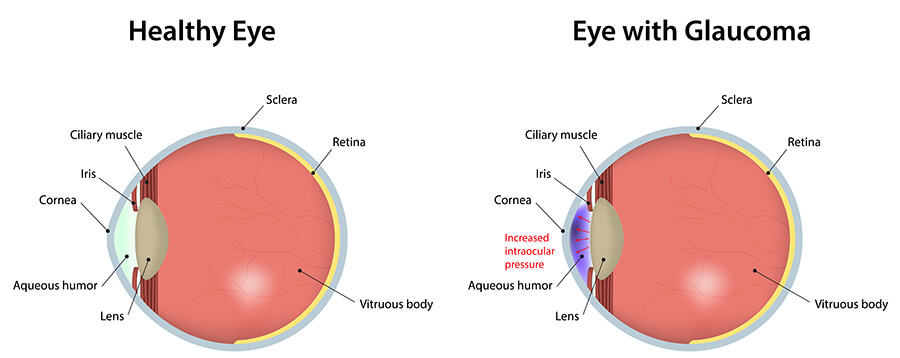Glaucoma is a leading cause of irreversible blindness in the world. It occurs when the pressure inside the eye is elevated, damaging the optic nerve and causing vision loss. The condition often develops over many years without causing pain or other noticeable symptoms. Consequently, it is possible that patients experience no vision loss until the disease has progressed significantly.
People are at higher risk of developing glaucoma if they are over the age of forty; have a family history of glaucoma; are of African, Hispanic, or Asian heritage; have a history of diabetes, migraines or high blood pressure; have high eye pressure; are significantly farsighted or nearsighted; have had an eye injury; have used steroid medications long-term; have corneas that are thin in the center; or have thinning of the optic nerve. Regular eye exams are critical as they help to monitor changes in the optic nerve and detect early signs of the disease.
Once diagnosed, glaucoma can be controlled. Treatments to lower pressure in the eye include non-surgical methods, such as prescription eye drops and medications, as well as laser therapy and surgery.

Detecting Glaucoma Progression
The Visual Field Test is a special automated procedure used to perform perimetry, which measures an area of peripheral vision. During this test, lights of varying intensities appear in different parts of the visual field while the patient’s eye is focused on a certain spot. The perception of these lights is charted and then compared to the results of a healthy eye at the same age as the patient in order to determine if any damage has occurred. The procedure is fast, easy and painless. It lasts ten to fifteen minutes and effectively diagnoses and monitors the progression of glaucoma.
Optic Nerve Digital Photography is performed regularly and then compared serially to detect change.
Optical Coherence Tomography (OCT) is used to see a more precise image of the optic nerve. This works similarly to an ultrasound, but instead of measuring sound, it measures the reflection of infrared light, which is reflected uniquely by different tissues. This test can detect glaucoma and its progression precisely and effectively.
Patients with glaucoma will often undergo these tests on a regular basis in order to determine how quickly the disease is progressing.
Selective Laser Trabeculoplasty
Selective Laser Trabeculoplasty (SLT) is a commonly used treatment option for glaucoma that lowers eye pressure and increases fluid drainage. This procedure offers an alternative or adjunct to prescription glaucoma medications. It takes just a few minutes, providing long-term results through the use of a low-energy laser beam. SLT can eliminate the need for costly and inconvenient eye drops by controlling glaucoma symptoms for years.
